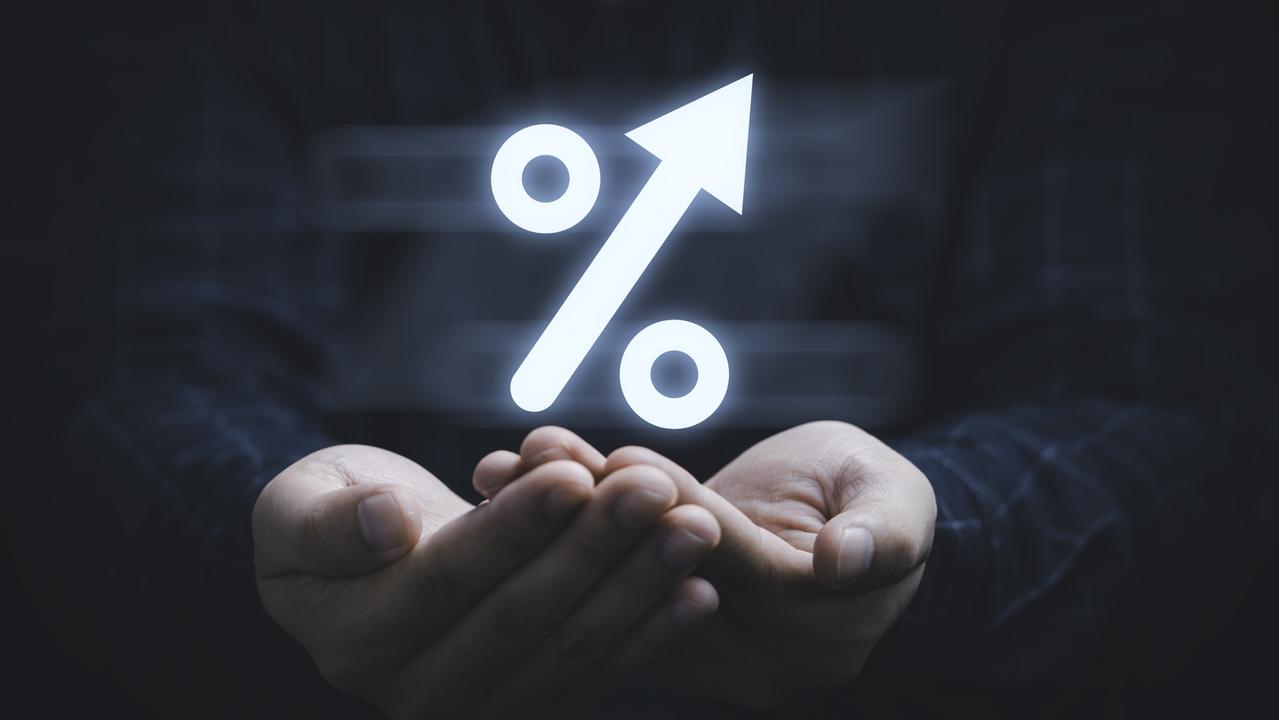Inflation impact different in the US as Aussie borrowers struggle
Softer-than-expected inflation in the US has fired up financial markets, but what does it mean for your mortgage, savings and travel plans?
Business
Don't miss out on the headlines from Business. Followed categories will be added to My News.
Australia has a lot in common with the US of A: freedoms, sports fanatics, a love of good steaks and potentially nuclear-powered submarines.
But there are also many differences when it comes to money and households, and the US inflation data released overnight is among them.
Financial markets reacted strongly to lower-than-expected US inflation, with its Consumer Price Index at 3.2 per cent in October – well below its peak of 9.1 per cent in mid-2022. Analysts say it signals that the most aggressive US interest rate rising cycle in 40 years is complete.
The official US interest rate is 5.5 per cent and financial markets are pricing in US rate cuts from March 2024.
Things are a lot different this side of the Pacific. While our Reserve Bank’s official cash rate is lower at 4.35 per cent, we had a rate rise just last week, some fear more are to come, and RBA rate cuts are not tipped until at least 2025.
In this tale of two countries, here are other differences that will shape our personal finances in 2024.
MORTGAGES AND HOUSING
Home loans are very different in the US, where 95 per cent of mortgages are on long-term fixed interest rates with terms of about 30 years. That means the sharp rises there have only affected new loans, causing a collapse in mortgage applications and refinancing.

A majority of Australia’s mortgages are on variable rates so we have felt the impact of RBA rate rises more acutely, and the lucky minority who are still enjoying low fixed rates will experience sharp rises in the coming months.
Both countries have experienced house price growth this year – weird when rates are so high – because of undersupply. Factors including Australia’s huge population surge and higher wages are boosting demand here, potentially keeping our interest rates higher for longer.
CASH SAVINGS
Savers love rising interest rates, and bank deposits in the US are generally paying between 5 and 5.4 per cent, not much more than Aussie savings accounts are dishing out right now despite the countries’ big difference in official interest rates.
Things will change if the US Federal Reserve starts cutting and our RBA raises rates, or at least keeps them higher through next year.
STOCK MARKETS
Shares have surged in the US and Australia since the inflation announcement, with the S&P 500 index in the US closing almost 2 per cent higher overnight, and our ASX 200 index up 1.5 per cent at noon on Wednesday.
Lower inflation and interest rates benefit more US companies because its market centres on technology and other growth sectors that love low rates, while the Aussie market’s focus on paying dividends isn’t a great thing when cash and bonds are paying similar incomes at the moment.
US shares could outperform – again – in the months ahead.

ECONOMIES
Last year forecasters were saying a US recession was certain and Australia might avoid it. Now the tables seem to have turned, and there is more talk of a recession here as our interest rate rises have bitten more broadly.
The US economy is doing better than ours – with its annual GDP up 2.9 per cent compared with 2.1 per cent here, and rate cuts would be good for US businesses and households.
In Australia a recession, defined as two quarters of negative GDP growth, remains a big risk. Unfortunately for the RBA, our next GDP numbers won’t be released until the day after its December 6 board meeting – robbing it of a key data point to help shape its rate decision.
TRAVEL SPENDING
Australians planning to head overseas this summer should like lower US inflation, which leads to falling US interest rates, which makes the US dollar less attractive and fuels currencies such as the Aussie dollar.
In recent days our dollar has jumped US1.5c – that’s big in currency terms – to more than US65c, giving Aussie travellers extra buying power.
More Coverage
Originally published as Inflation impact different in the US as Aussie borrowers struggle









